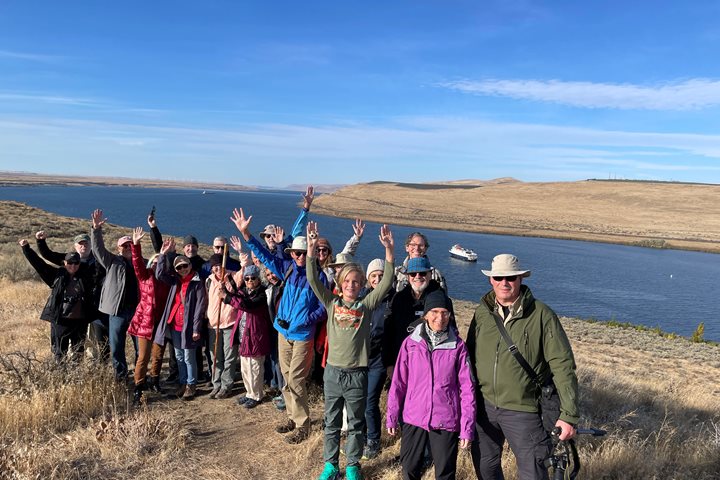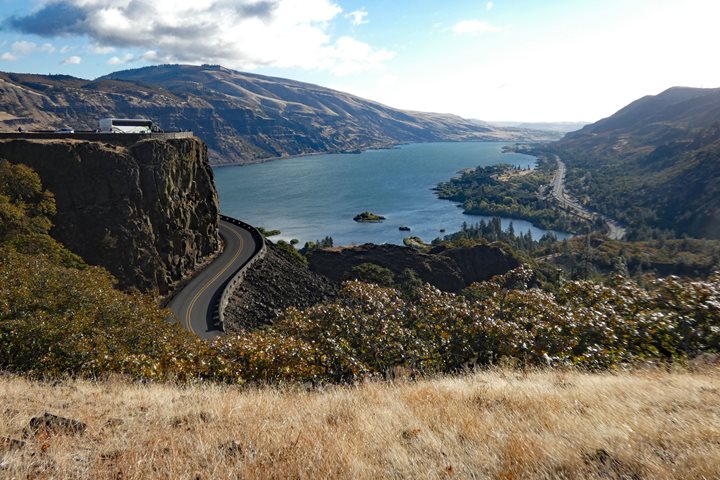We woke up anchored near the confluence of the Palouse and Snake Rivers, with a beautiful alpenglow on the golden hills. In the morning, many of us explored the Palouse River via kayaks and expedition landing craft tours, while some of us took a short bus ride 4 miles upriver to see the beautiful and dramatic Palouse Falls.
The Palouse River marveled us with its peaceful waters and fabulous contrasts of riverside greenery and golden grasses growing on the sides of the canyon, along numerous dark basalt layers, emplaced here some 15 million years ago at least, and shaped into undulating hills, terraces, buttes, and mesas by mega-floods some 15,000 years ago. It was wonderful to see many birds of prey, including golden eagles, sharp-shinned hawks, red-tailed hawks, and harriers, as well as a belted kingfisher, many ravens and crows, western grebes, Clark’s grebes, and American coots. We were thrilled to see two mammals as well: a mink swimming impressively fast, and a much less active but also adorable porcupine, sleeping in a tree!
In the afternoon, back aboard the ship, we enjoyed cruising down the Snake River on approach to Lower Monumental Dam. The scenery was stunning, as we imagined how the mega-floods, 100 feet high and 8-mile wide wall of water moving at 50 miles an hour would have plunged through the Palouse, Snake, and Columbia Rivers to shape the landscapes we observe today. Some of us boarded our trusted rubber boats, the expedition landing crafts, and went through the Lower Monumental Dam locks this way, watching how our ship, the National Geographic Sea Lion, negotiates the lock system.
Another 30 river miles further down-river, we went through the Ice Harbor Dam lock, while enjoying appetizers and our cocktail hour on the top deck during a lovely sunset. After dinner, we enjoyed a very interesting presentation by Don Popejoy on the subject of Lewis and Clark’s expedition from St. Louis to the Pacific Ocean and the expedition’s time along the Columbia River.







